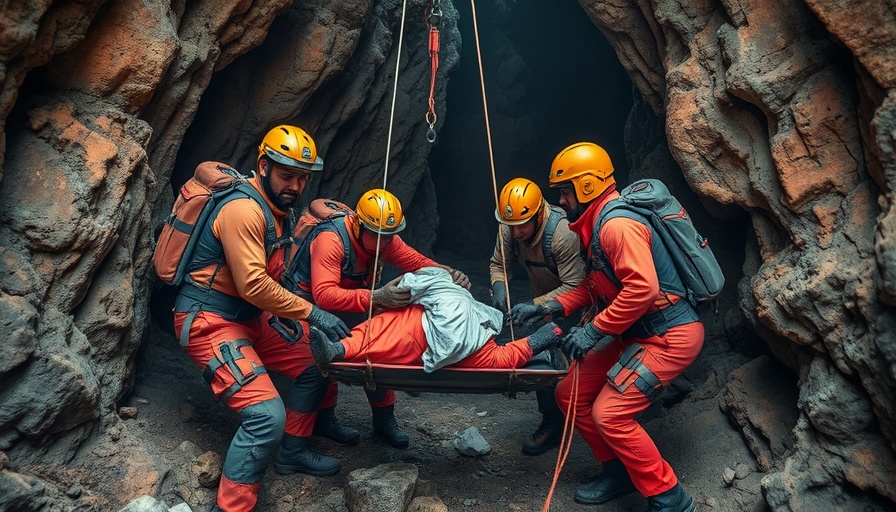
Rescuers Triumph: The Tale of a Brave Sicily Excursion
On a harrowing day in the picturesque Piedmont region of Italy, an unexpected incident shook a group of cave explorers. A 63-year-old man, an adventure seeker passionate about discovering the Earth's hidden wonders, became trapped over 40 meters deep in the rugged terrain after being struck by falling rocks. This event, which unfolded in the Abisso Paperino cave system near Ormea, serves as a stark reminder of the dangers faced by those who seek thrill and exploration in nature's labyrinths.
How Rescue Operations Are Conducted in Challenging Environments
Rescuing a trapped individual in a cave requires specialized skills and significant coordination. In this case, the mountain rescue teams employed explosives to enlarge bottlenecks within the cave, a decision that showcased both ingenuity and caution. Using this method allowed the rescuers to navigate the complex passageways and vertical shafts, which included two challenging 15-meter drops. The fact that they could bring the man out safely speaks volumes about the rigorous training and preparation these rescue teams undergo. Their efforts reflect a commitment not just to saving lives but also to ensuring they can preserve the integrity of these delicate ecosystems.
The Psychological Toll of Trapped in Darkness
While the physical dangers of caving are often highlighted, the psychological effects of being trapped can be equally profound. The trapped man remained aware and alert during his ordeal, receiving treatment from medical teams who reached him within hours of the accident. This step was crucial in minimizing panic and ensuring that he remained stable until his rescue could commence. For him, moments of uncertainty and fear must have felt prolonged in the darkness, yet the knowledge that help was on the way might have had a calming effect. It’s essential to understand that the mental fortitude required for such situations is as vital as the physical prowess demonstrated by the rescuers.
Reflecting on Our Natural World and Safety Measures
This incident raises broader questions about safety measures in outdoor activities. Are we doing enough to prepare adventurers for the realities of risks they might encounter? Educational resources and safety workshops could significantly reduce the likelihood of accidents, helping beginners understand safe caving practices. Furthermore, as interest in exploration grows, local authorities and caving associations should consider promoting awareness campaigns that underscore the hazards present in such excursions.
International Rescue Teams: A Global Network of Help
Rescue operations are not limited to just one region. The collaboration seen during rescue missions invokes a global camaraderie among rescue workers. Techniques and advice often circulate between nations as experiences shared cross continents, making the work of these teams a truly international effort. This incident in Italy might serve as a case studies for training exercises elsewhere, highlighting how rescuers adapt to various environments around the world.
Future of Caving: Innovation and Exploration
As technology advances, the future of cave exploration and rescue looks promising. Innovations such as drones equipped with thermal imaging and advanced medical gear have the potential to transform how we approach cave rescues. Imagining a world where rescuers can assess a trapped adventurer's condition before entering a cavern is an exciting prospect. Continuous advancements will not only enhance rescue missions but also ensure we preserve these natural wonders for future generations.
The rescue operation concluded successfully with the man emerging from the cave after facing substantial hurdles, a testament to human determination and the heroic spirit of rescuers. As we celebrate this survival story, turning our attention to awareness and preparedness for outdoor excursions is paramount. Each adventure should initiate thoughtful planning and respect for nature's unpredictability.
 Add Element
Add Element  Add Row
Add Row 



Write A Comment